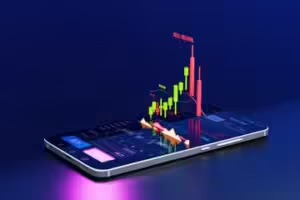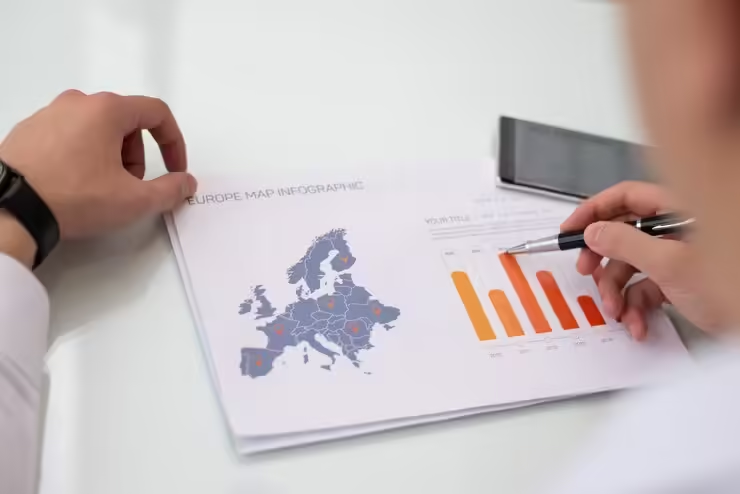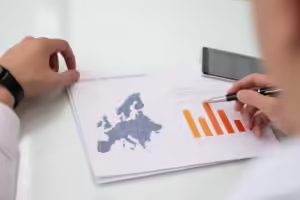Exploring the Dynamics of Currency Markets
When people hear the term “forex trading,” they often think it’s something only for financial experts or people working in big corporations. However, forex trading is something that anyone can learn and do, even from the comfort of their own home. The foreign exchange market, or forex, is where different currencies are bought and sold. It’s one of the largest financial markets in the world, with a daily trading volume of over $6 trillion.
Understanding the basics of forex trading doesn’t require a deep knowledge of finance. At its core, forex trading involves buying one currency while selling another, aiming to make a profit as exchange rates change. Simply put, if you believe that the value of one currency will increase compared to another, you buy the first and sell the second. If the market moves in your favor, you can later sell the currency you bought at a higher price, making a profit.
Let’s explore the world of forex trading to understand how it works, the risks involved, and how you can get started.
The Basics of Forex Trading
Forex trading revolves around currency pairs. A currency pair is made up of two different currencies: the first one is called the base currency, and the second one is known as the quote currency. The price of a currency pair tells you how much of the quote currency you need to buy one unit of the base currency. For example, if the EUR/USD pair is priced at 1.18, it means you need 1.18 USD to buy 1 EUR.
Currencies are always traded in pairs because when you trade forex, you are buying one currency and selling another. For instance, if you buy the EUR/USD pair, you are purchasing euros and selling dollars. Conversely, if you sell the pair, you are selling euros and buying dollars.
Forex prices are influenced by various factors, including economic data, interest rates, political events, and even natural disasters. Traders analyze these factors to make educated guesses, or “speculations,” about how currency prices will change.
Also Read-https://khabarmania.com/investing-101-how-to-grow-your-wealth/
How to Start Forex Trading
Starting with forex trading is quite simple, but it does require some preparation. Here’s a step-by-step guide to help you begin:
1. Learn the Basics: Before you start trading, it’s important to understand how the forex market works. There are many free resources online, such as articles, videos, and tutorials, that can help you get up to speed.
2. Choose a Reliable Broker: To trade forex, you need to open an account with a broker. A broker is a company that gives you a platform to trade currencies. It’s crucial to choose a broker that is regulated and has a good reputation. Look for user reviews and check regulatory bodies like the Financial Conduct Authority (FCA) in the UK or the Commodity Futures Trading Commission (CFTC) in the US.
3. Use a Demo Account for Practice: The majority of brokers provide demo accounts that allow you to trade using virtual funds. This allows you to practice and learn the platform without risking real money. Use this opportunity to try out different strategies and get comfortable with the trading process.
4. Develop a Trading Plan: A trading plan outlines your strategy, including your goals, risk tolerance, and the types of trades you’ll make. Having a plan helps you stay disciplined and avoid making emotional decisions. Stick to your plan and review it regularly to make any necessary adjustments.
5. Begin Trading with Real Money: After you feel confident using the demo account, you can transition to trading with real money. It’s smart to start with small amounts and slowly increase your trades as you become more experienced. Keep in mind that forex trading carries risks, so only invest money that you can afford to lose.
Understanding the Risks Although forex trading can be lucrative, it also involves considerable risks. The forex market is highly volatile, with prices able to shift quickly due to news events or economic reports. This volatility can result in substantial profits, but it can also lead to significant losses.
A major risk in forex trading is leverage. Leverage allows you to manage a large position with a relatively small amount of capital. For instance, with 100:1 leverage, you can control $100,000 with just $1,000 of your own money. While leverage can boost your earnings, it can also magnify your losses. If the market turns against you, you might lose more than your initial investment.
Another risk is the unpredictability of the market. Even with thorough analysis, predicting currency movements is difficult. Events like sudden political changes, natural disasters, or unexpected economic data can cause sharp price movements that are hard to foresee.
To manage these risks, it’s essential to use risk management techniques. One common method is to set stop-loss orders, which automatically close your position if the market moves against you by a certain amount. This helps limit your losses and protect your trading capital.

Strategies for Successful Forex Trading
Success in forex trading requires more than just luck; it’s about having a strategy and sticking to it. Here are some common trading strategies:
1. Day Trading: Day traders open and close their positions within the same trading day. This strategy involves making quick trades to profit from small price movements. Day trading requires a lot of time and focus, as you need to monitor the markets closely throughout the day.
2. Swing Trading: Swing traders hold their positions for several days or even weeks, aiming to profit from larger price movements. This strategy requires patience and the ability to analyze the market over a longer period.
3. Scalping: Scalping is a short-term strategy where traders make many small trades throughout the day, taking advantage of tiny price movements. This approach requires quick decision-making and a high level of concentration.
4. Position Trading: Position traders hold their positions for weeks, months, or even years. This long-term strategy is based on the belief that a currency pair will move in a certain direction over time. It requires a deep understanding of the fundamental factors that drive currency prices.
5. Technical Analysis: Technical traders use charts and indicators to identify patterns and trends. They believe that past price movements can predict future price movements. Typical technical indicators include moving averages, the relative strength index (RSI), and Bollinger Bands.
6. Fundamental Analysis: Fundamental traders focus on economic data and news events to make trading decisions. They analyze factors like interest rates, inflation, and economic growth to determine the likely direction of a currency pair. This approach requires staying informed about global economic news.
The Psychology of Trading
One of the hardest parts of forex trading is managing your emotions. Fear, greed, and overconfidence can all result in poor trading decisions. It’s important to stay disciplined and stick to your trading plan, even when the market isn’t going your way.
Fear can make you exit a trade too early, missing out on potential profits. On the other hand, greed can cause you to hold onto a trade for too long, hoping for more gains, only to see the market turn against you. Overconfidence may cause you to take on excessive risk, potentially leading to substantial losses
To succeed in forex trading, you need to develop a strong mindset. This means being able to accept losses and learn from them, rather than letting them affect your future trades. It’s also important to be patient and not rush into trades. The forex market is always open, so there will always be opportunities to make profitable trades.
Continuous Learning and Improvement
Forex trading is a journey that requires ongoing learning and improvement. The market is always changing, and staying informed is key to making successful trades. Read books, attend webinars, and follow experienced traders to learn new strategies and techniques.
Keeping a trading journal is also helpful. Record your trades and analyze your performance to identify patterns in your behavior. Regularly review your journal to see what’s working and what isn’t, and adjust your strategy as needed.
By following these steps and continuously learning, you can navigate the forex market with more confidence and increase your chances of success.
Also Read-https://guidesbar.com/how-to-lose-belly-fat-in-15-days/
Here are some trending FAQs on forex trading:
- What is forex trading?
Forex trading involves the exchange of currencies to gain profit from fluctuations in their exchange rates. - How can I start trading forex?
To start trading, you need to learn the basics, choose a reliable broker, open a trading account, and begin with a demo account to practice. - Is forex trading risky?
Yes, forex trading is risky due to market volatility and the potential for significant losses, especially when using leverage. - What is leverage in forex trading?
Leverage allows you to control a large position with a small amount of capital, increasing both potential profits and losses. - Can I trade forex with a small amount of money?
Yes, many brokers allow you to start trading with a small deposit, but it’s important to manage risk carefully. - What are some common forex trading strategies?
Common strategies include day trading, swing trading, scalping, and position trading. - How does technical analysis help in forex trading?
Technical analysis involves studying charts and using indicators to predict future price movements based on historical data. - Is forex trading legal?
Forex trading is legal in most countries, but it’s essential to use a regulated broker and follow local regulations. - What is the best time to trade forex?
The best time to trade depends on the currency pairs and the trader’s strategy, but high activity often occurs during overlapping market sessions. - How do I manage risks in forex trading?
Risk management techniques include using stop-loss orders, trading within your risk tolerance, and avoiding over-leveraging.










